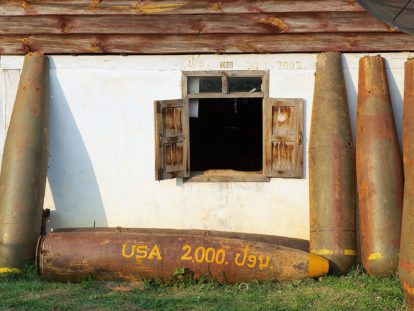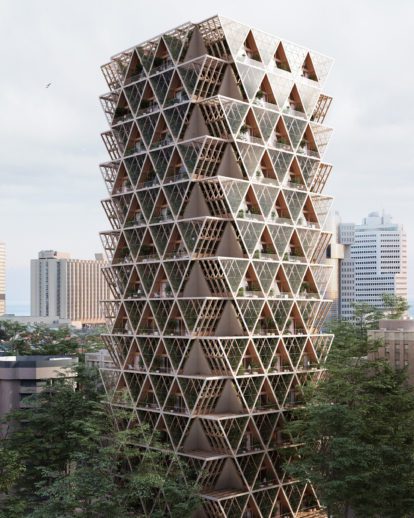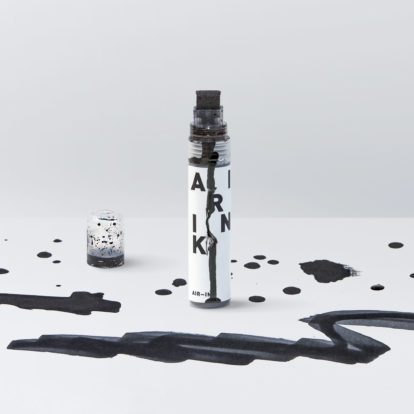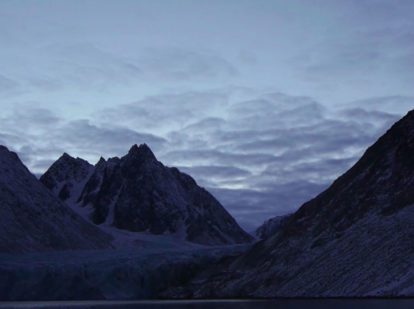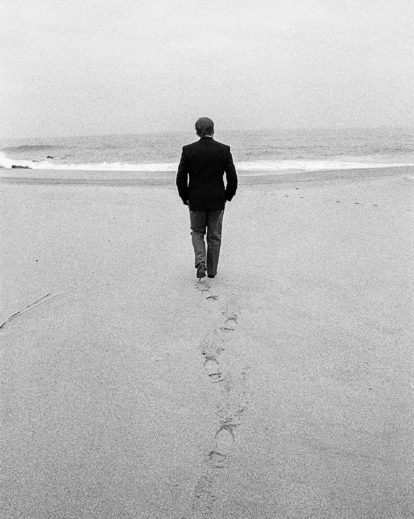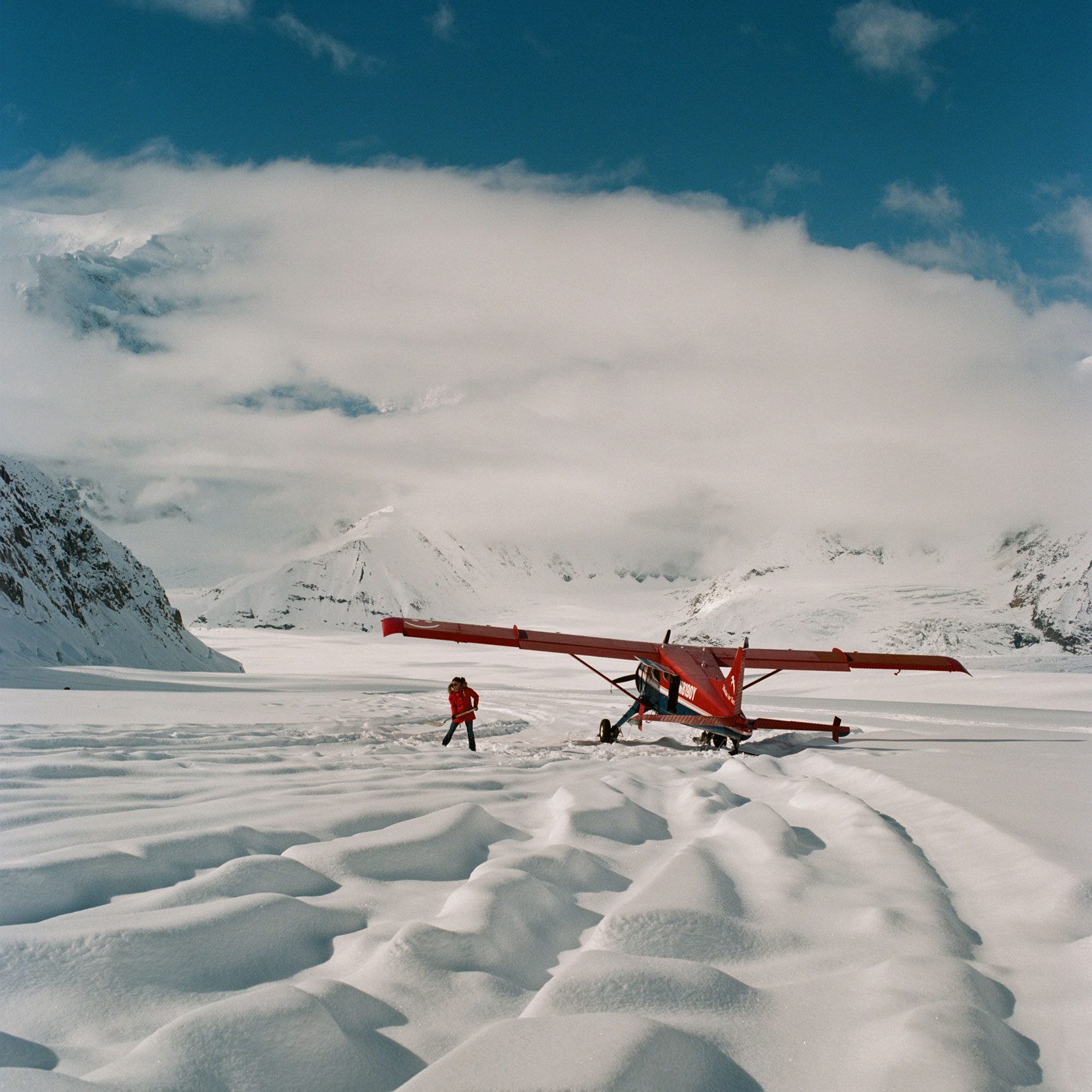There is a deathly beauty to these images of limestone quarrymen captured by the Egyptian photographer Nader Saadallah. Deathly, not just because of the pervading ghostly whiteness, but because this is one of the most dangerous, oppressive occupations in the world. These photographs come from Minya province, one of Egypt’s most impoverished areas – the lack of work here means that young men will often make the precarious journey to Libya in search of a job.
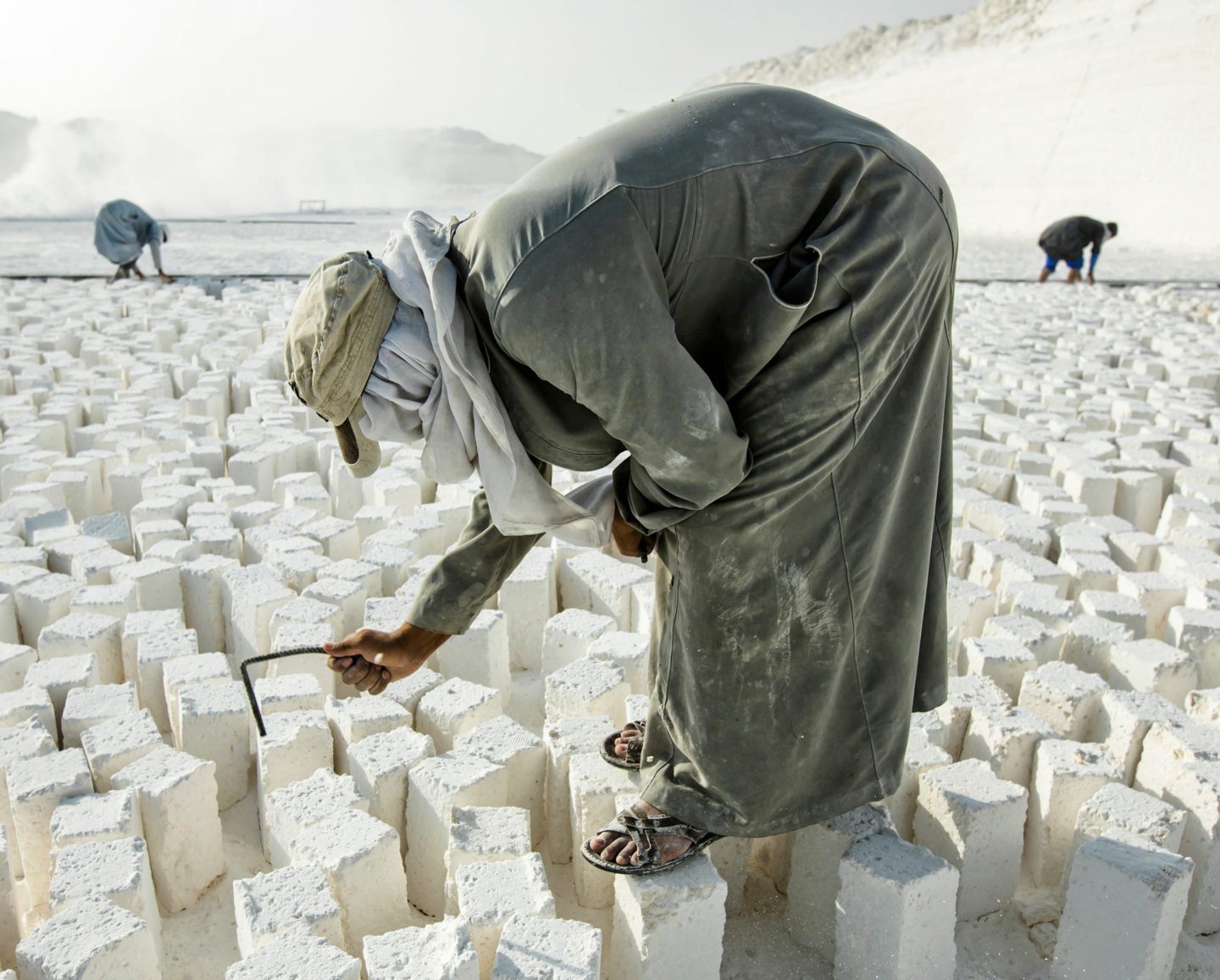
Workers hunch over in order to extract the free stones, standing them height-wise for the final stage of preparation.
Those who opt for working in the quarries risk either violent death through accidents involving machinery or electric cables, or a slow and painful death through lung diseases such as silicosis caused by stone dust inhalation.
White limestone has always had a double-edged history in Egypt. In ancient times the precious sedimentary rock was used to cover the pyramids at Giza, before being stripped off, centuries later, to provide building materials for mosques. Today it is used not just in building projects, but in animal feed, fertilisers, ceramics, and even dairy products (because of its high calcium content). In Minya, it is central to the struggling economy – the quarries here are some of the largest and oldest in the country – so without lives being put daily on the line, the region itself would die.
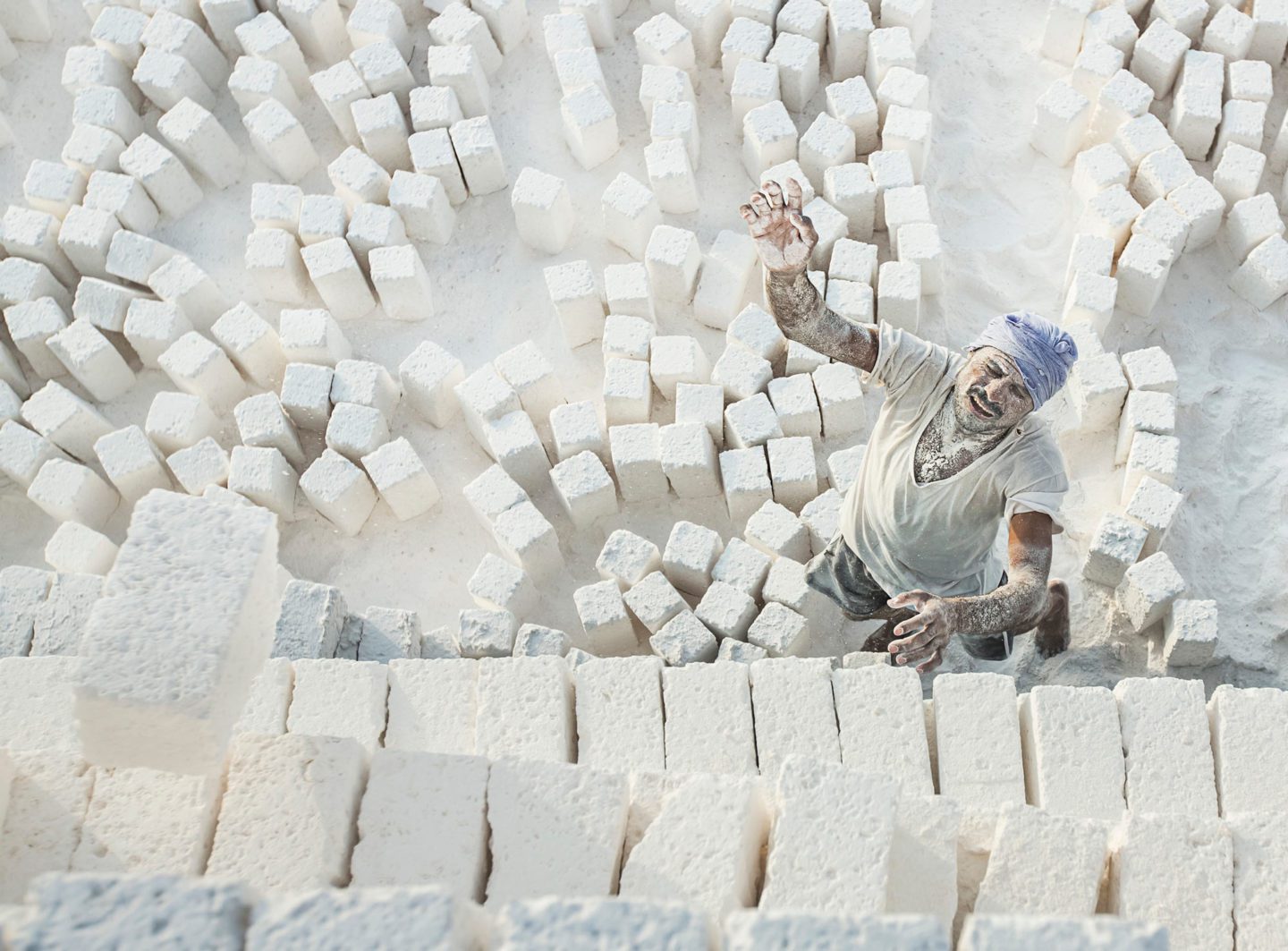
A worker fills a vehicle for trading at the market.
As a photographer Saadallah has partly made his name through his images of individuals who work in industrial settings. Like the eighteenth century English painter Joseph Wright, he captures the eerie beauty of what it is to be a human dwarfed by a hazardous working environment. One of his most famous series depicts the blacksmith/casting process, in which the fierce glow of the forge is contrasted with the dark muscular setting in which the men work. In these photos, by contrast, the intense light combines with the hard texture of the stone to reveal a landscape that’s as hostile as it’s beautiful, so alien it’s almost as if the workers have pitched up on another planet.
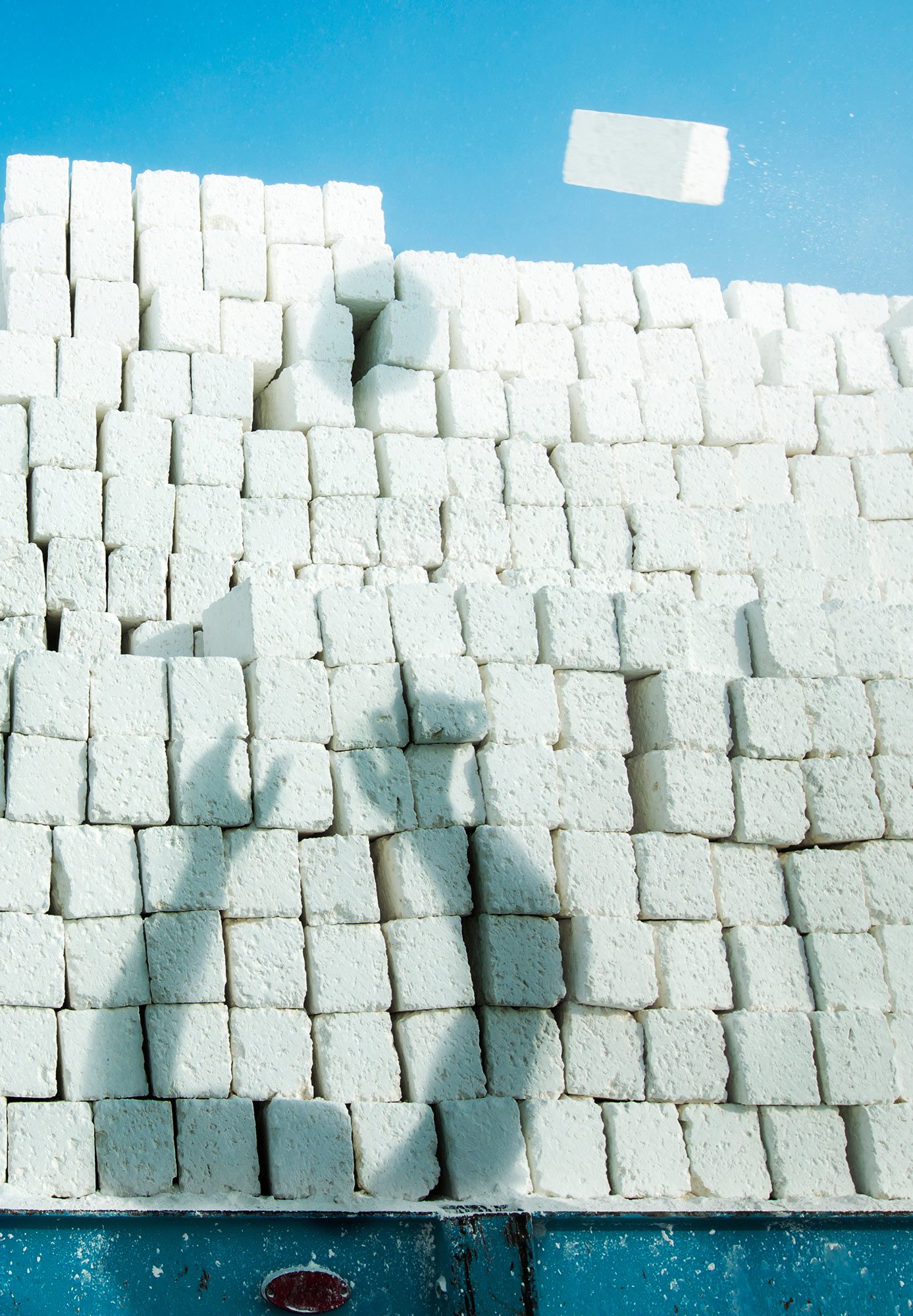
A worker casts a shadow onto the stack of blinding white stone blocks.
Earlier this year, the Egyptian online magazine Cairo Scene went and talked to some of those who spend their lives in Minya quarries. It exposed how many began their time here as child labourers, starting at the age of 14 or 15, on weekly salaries as low as 20 Egyptian pounds (EGP) a week that would rise after a couple of years to EGP 120. (Currently there are EGP 22.91 to one English pound). One worker, Yahya (not his real name), said, ‘We work in inhuman conditions. The limestone powder surrounding us poses countless health risks. We can’t even see each other while working. All the machinery we use is extremely dangerous. If they even touch a person, they could severely injure or kill them. All the wires, as you can see, are exposed; posing massive electrocution risks. What can we do? It’s not like we can get any other job.’
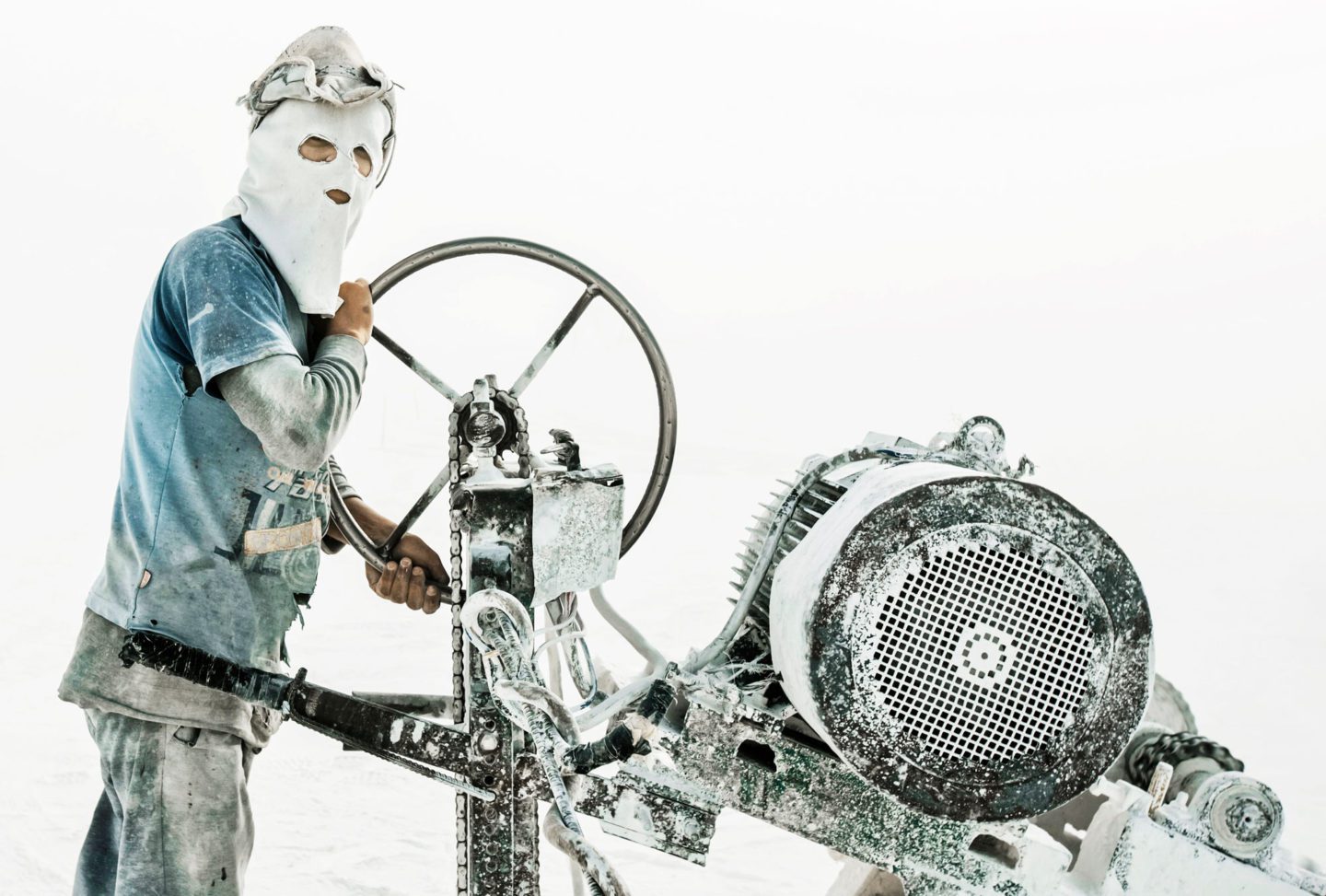
Workers operate a machine called El Fasalah which cuts and partitions the mountain into stone blocks.
Like the eighteenth century English painter Joseph Wright, Saadallah captures the eerie beauty of what it is to be a human dwarfed by a hazardous working environment.
Another – 29-year-old Makram – declared, ‘I have a home and a wife, how can I give in to fear? I wish I could find another job, I would leave the country if I could. But I can’t even begin to think of what else I can do. Living in the mountain has buried us alive, and our minds don’t even function properly anymore.’
Although the World Bank reported this spring that the Egyptian economy is starting to improve, with GDP forecast to grow by 5% this financial year, it will be a long time till men like Yahya and Makram feel any impact. President Abdel Fattah al-Sisi has almost achieved his goal of reducing unemployment to 10%, but it’s inescapable that the country has been in constant political and economic turmoil since the Arab Spring. The devastating removal of subsidies for food and fuel combined with rising prices mean that many people are experiencing far greater poverty even as statistics shout that the country is wealthier. In the last year Egyptian food banks have seen many more families coming to them for help.
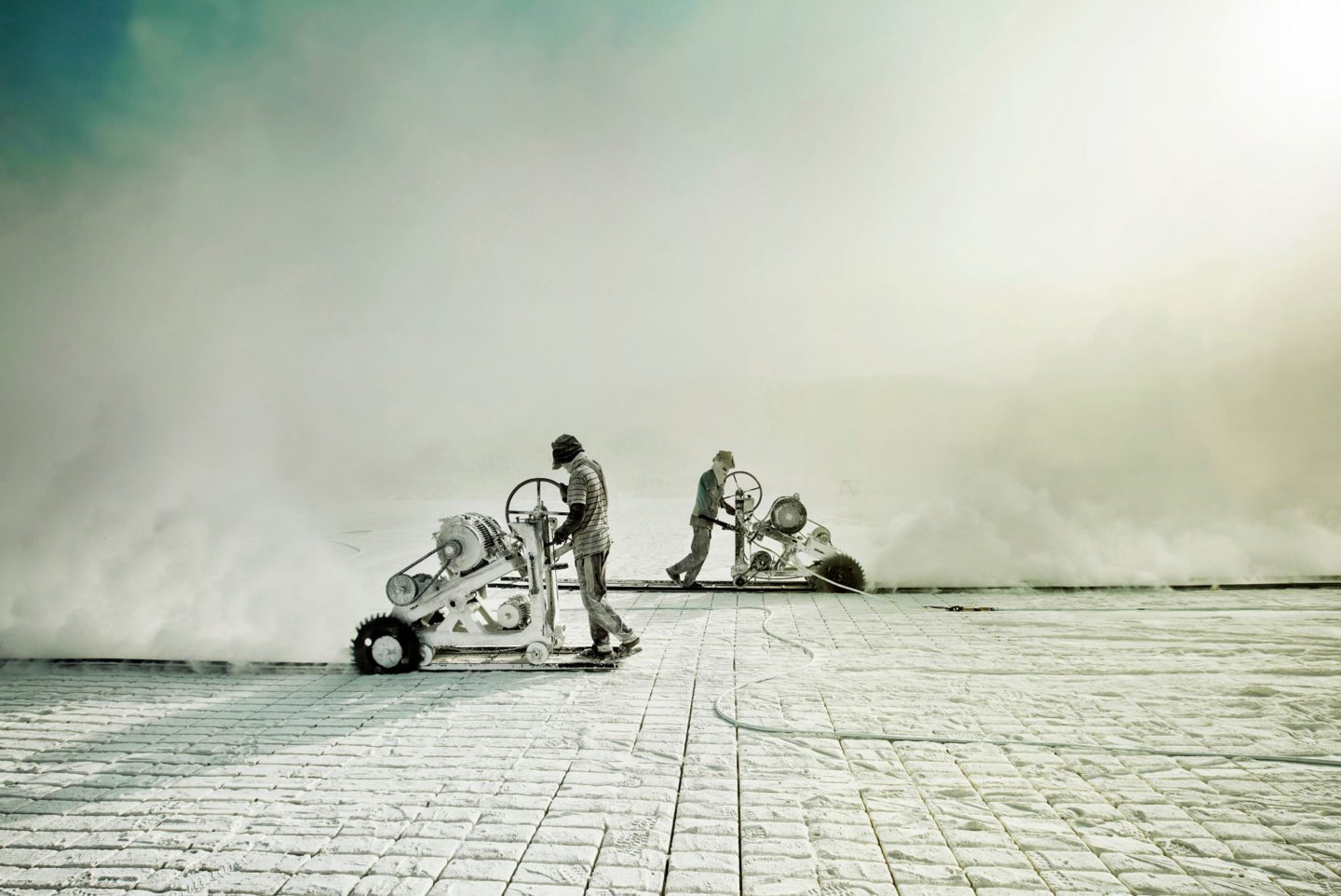
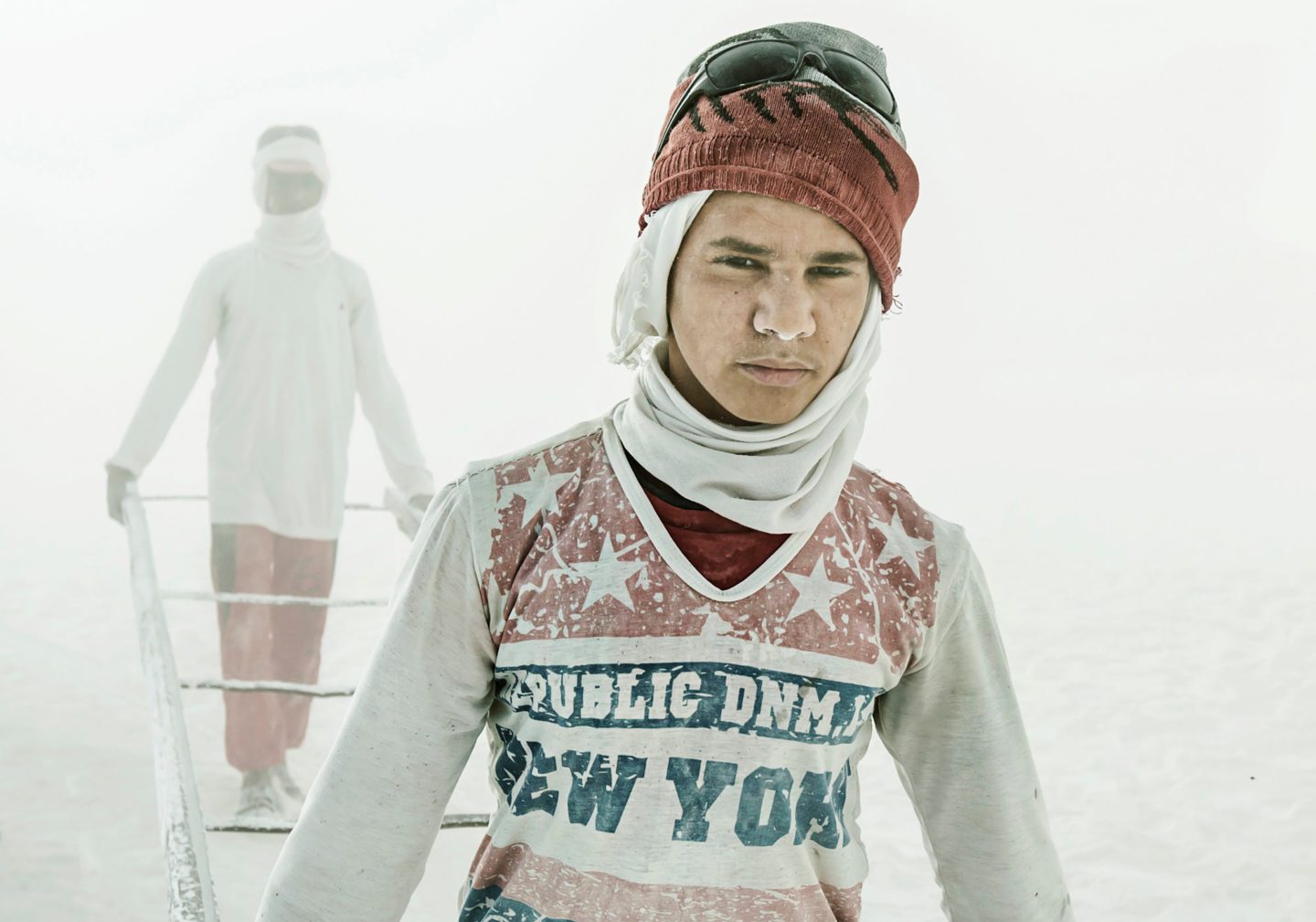
Children often help their in the quarry. Weekly salaries can be as low as 20 Egyptian pounds a week.
In the quarries themselves there have been some attempts to make improvements since the revolution. In Minya, for instance, in 2011 the employees came together to form a Quarry Worker Syndicate, which has fought against wage reductions, as well as providing practical financial help to women widowed by accidents. But nothing will really change the current situation until the government introduces proper health and safety regulations. And this is unlikely to happen any time in the near future.
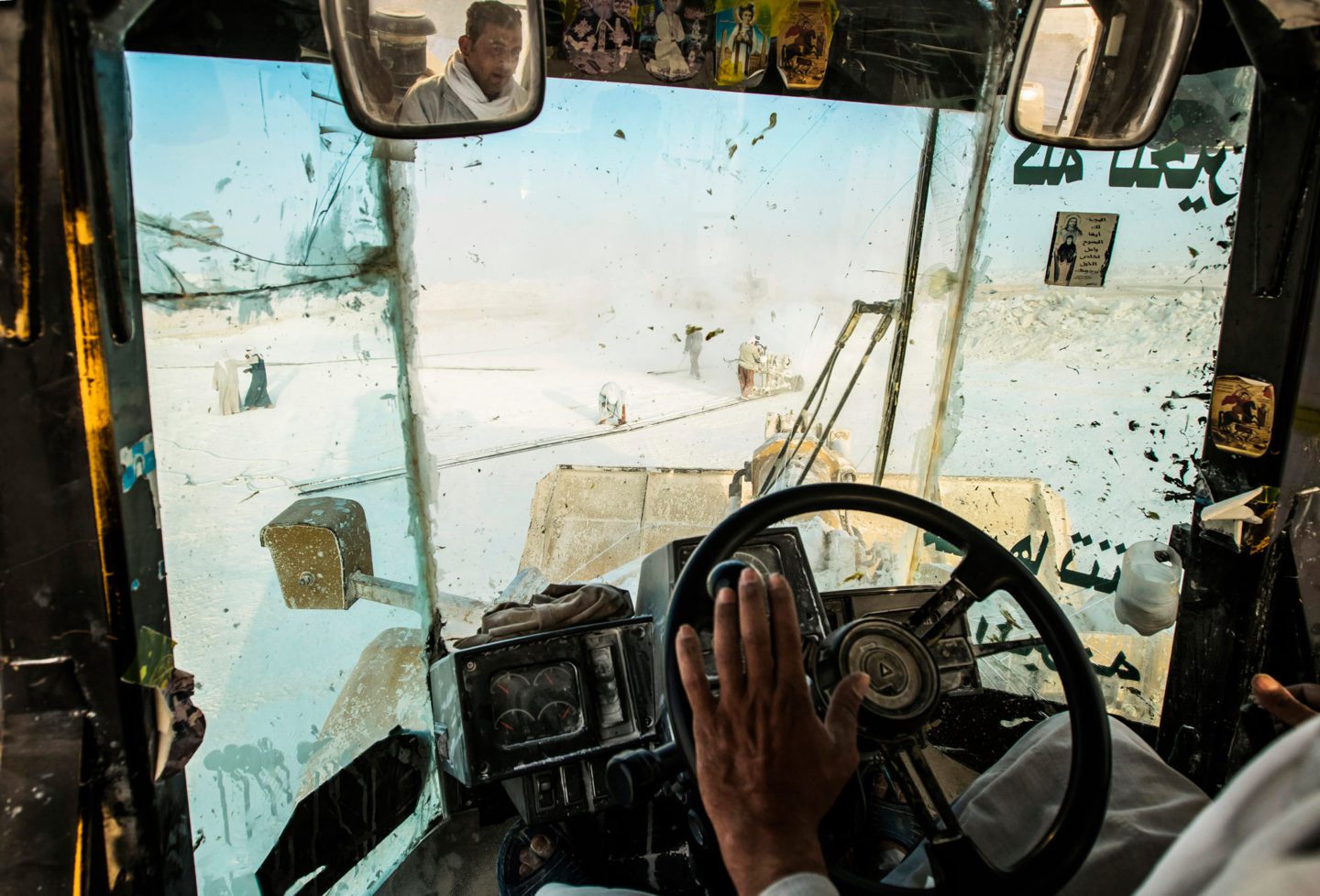
The first phase in the process is the equalization of the mountain with winches and spikes.
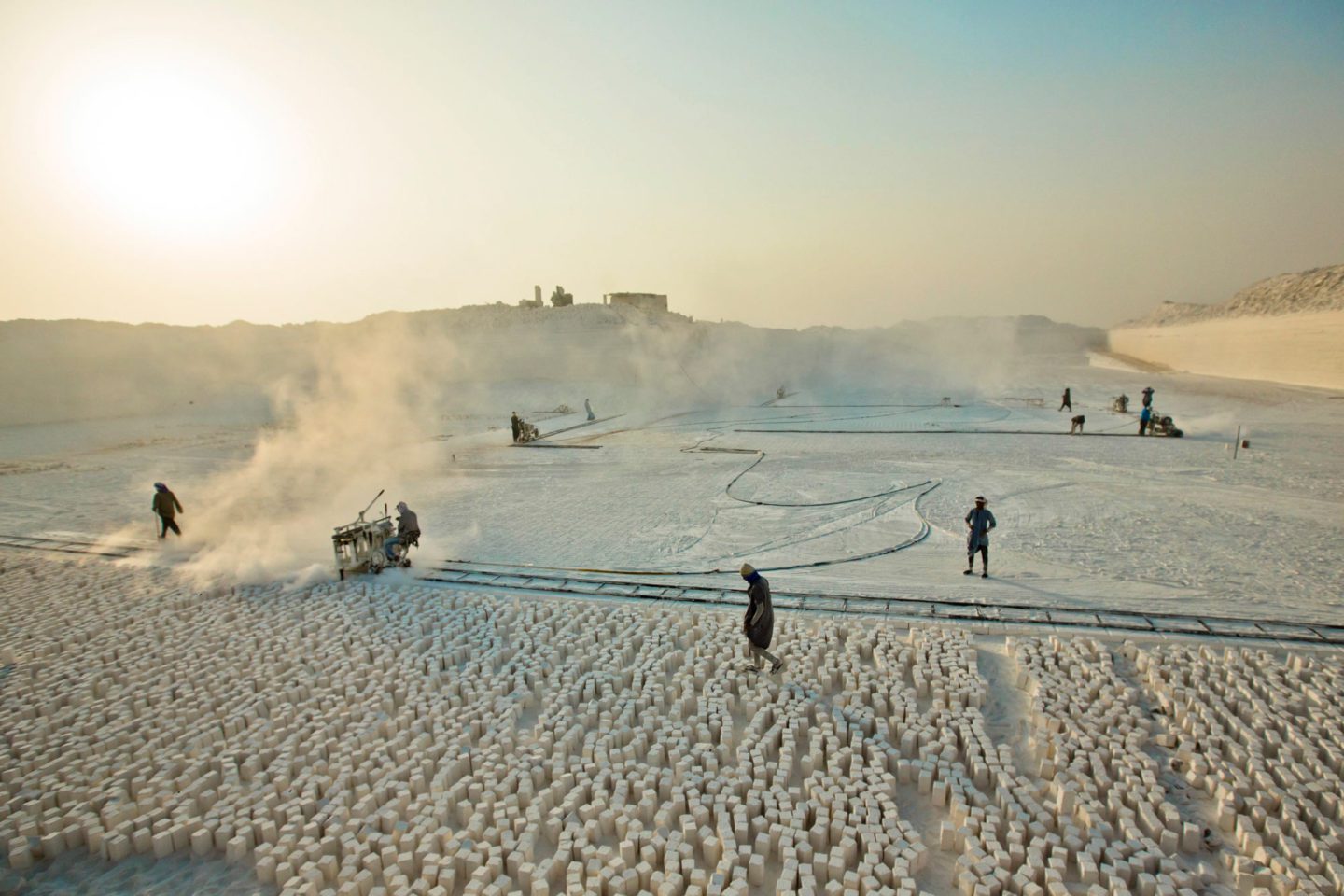
Outside organisations have tried to come in and make a difference. Just over a decade ago, the World Bank combined forces with the Catholic organisation Caritas and the Wadi El-Nil Association for the Protection of Quarry Workers to stop child labour here. Yet any progress they made in terms of raising awareness and getting the children back to school so they could find other jobs were reversed by the economic instability and sharp drop in tourism following 2011. The recent Cairo Scene article clearly demonstrates that in financially desperate times, child labour continues to be commonplace.
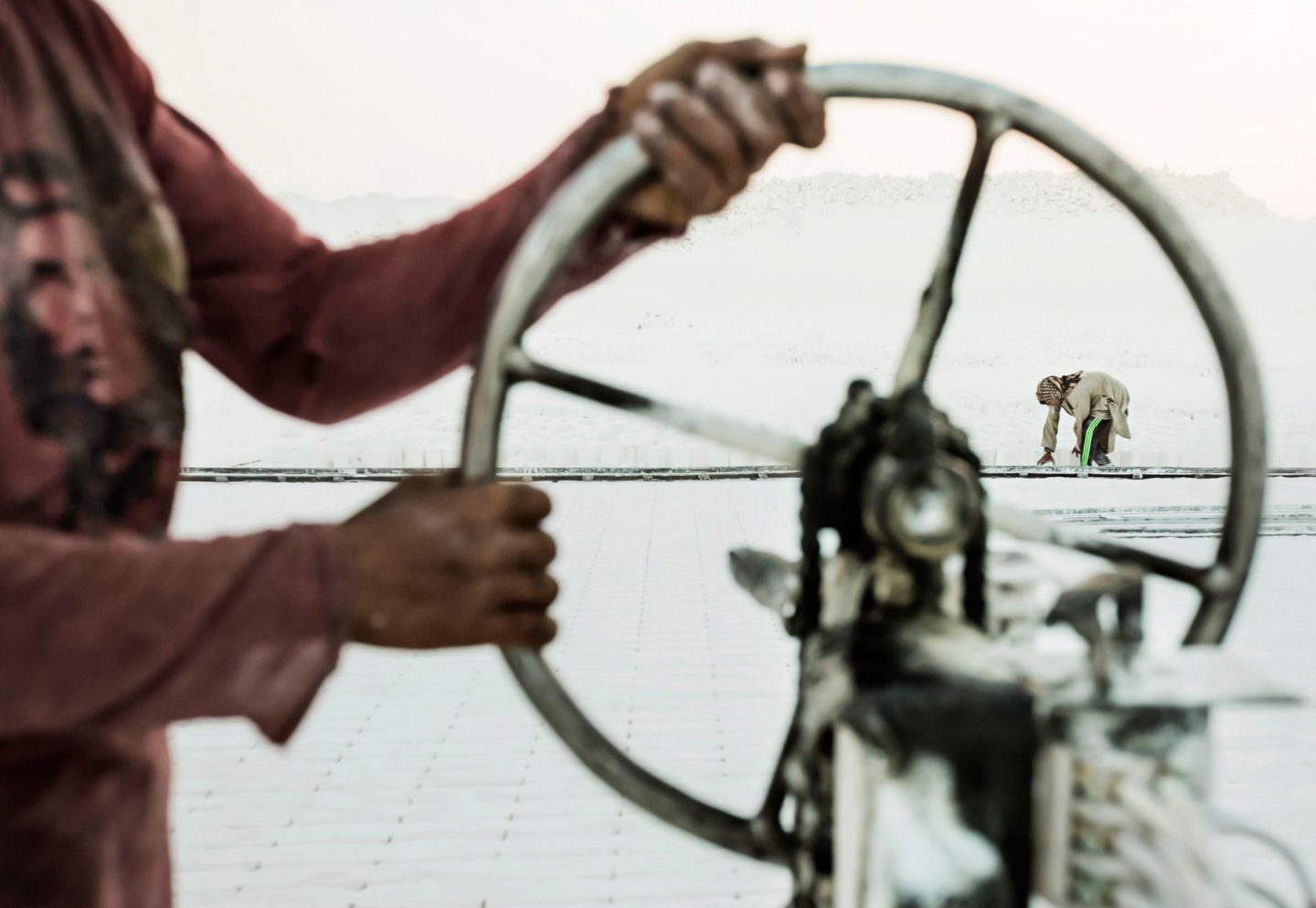
One of the workers extracts free stone blocks.
The depressing fact is that in a country beset by so many problems, these men and boys, trapped in this haunting, perilous landscape, are largely invisible, not just to politicians, but even to the residents of nearby cities. One of the ironies is that it is precisely the lethal beauty of their surroundings that gives them any hope of drawing the attention of the outside world.
